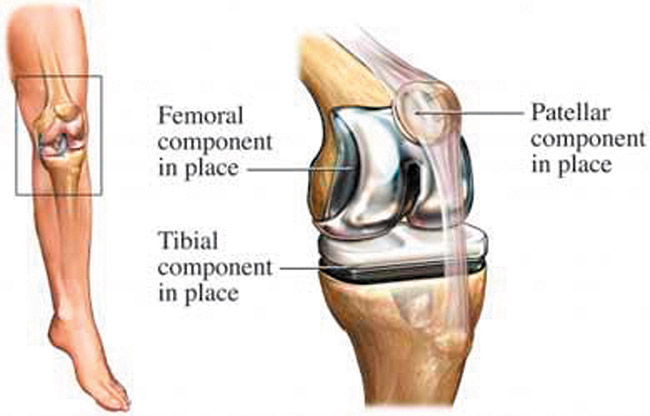Prepping For Knee Replacement
One day you’re walking around OK, albeit a bit gimpy. The next some surgeon is sawing the bones out of your leg and redoing the knee with metal and plastic.
If you’re reading this Wednesday, it means I’ve just survived left knee replacement surgery. Now comes the long and usually painful therapy and rehabilitation.
I put this off until the last possible moment – when it became difficult to walk up and down stairs. I was going to do it earlier. But then the former chief of orthopedics at Kaiser gave a talk about the pain and the long recovery period and ended with “if I could get along on just a few pain pills a day, I’d do that instead of surgery.” I walked out.
There was another reason to wait. It used to be that they said an artificial knee would only last about seven years. Now they’re saying 20.
I was hoping they’d discover some kind of injectable foam to replace lost cartilage, but that never happened.
Knee-replacement surgery seems to have become about as commonplace as getting a haircut. It was first performed in 1968. Since then, improvements in surgical materials and techniques have greatly increased its effectiveness. Total knee replacements are one of the most successful procedures in all of medicine, and according to the Agency for Healthcare Research and Quality, more than 600,000 knee replacements are performed each year in the United States.
These are the basics I’ve gone through, assuming I’m still alive when you read this:
Bone prepared. The damaged cartilage surfaces at the ends of the femur and tibia are removed along with a small amount of underlying bone.
Position the metal implants. The removed cartilage and bone are replaced with metal components that re-create the surface of the joint. These metal parts may be cemented or “press-fit” into the bone.
Resurface the patella. The undersurface of the patella (kneecap) is cut and resurfaced with a plastic button. Some surgeons do not resurface the patella, depending upon the case.
Insert a spacer. A medical-grade plastic spacer is inserted between the metal components to create a smooth gliding surface.
OK … I’ve got it. Now what?
More than 90 percent of people who have total knee-replacement surgery experience a dramatic reduction of knee pain and a significant improvement in the ability to perform common activities of daily living. Excessive activity or weight may speed up wear and cause the knee replacement to loosen and become painful. Therefore, most surgeons advise against high-impact activities such as running, jogging or jumping for the rest of your life after surgery.
This is from OrthoInfo.com, and I can’t say if my doc or yours agrees. But it’s cool with me!
Now the hard part. Learning to walk again.
Let’s see how that goes.






